The Acidic Cannabinoids: THCA, CBDA, and Their Unique Properties
When most people think about cannabis compounds, they picture THC and CBD—the neutral cannabinoids that have dominated research and consumer awareness for decades. However, these familiar compounds represent only half the story. In living cannabis plants, acidic cannabinoids are the dominant form, comprising over 95% of all cannabinoid content. THCA, CBDA, and other cannabinoid acids aren't just precursors to their neutral counterparts—they're bioactive compounds with unique properties that researchers are only beginning to understand.
The difference between acidic vs neutral cannabinoids fundamentally shapes how cannabis affects the human body. While THC produces psychoactive effects, THCA does not. While CBD has become ubiquitous in wellness products, CBDA may offer distinct advantages in certain applications. Understanding cannabinoid acid properties opens new perspectives on both therapeutic potential and product development in the hemp and cannabis industries.
This comprehensive guide explores the chemistry, biology, and emerging science of acidic cannabinoids. We'll examine how raw cannabinoids function in their natural state, why decarboxylation transforms their properties, and what makes THCA and CBDA particularly interesting to researchers and consumers alike. For those interested in experiencing premium THCA flower in its most potent form, understanding these acidic compounds provides essential context.
The Biosynthesis Pathway: How Cannabis Creates Cannabinoid Acids
CBG-A: The Mother of All Cannabinoids
All major cannabinoid acids share a common origin in CBG-A (cannabigerolic acid), often called the "mother cannabinoid" or the universal precursor cannabinoid. This foundational compound represents the starting point of the biosynthesis pathway that produces cannabis's remarkable chemical diversity.
The process begins with two precursor molecules: olivetolic acid and geranyl pyrophosphate. Through an enzymatic reaction, these combine to form CBG-A, which accumulates in the trichomes of developing cannabis flowers. From this single parent compound, the plant's genetic programming determines which specific cannabinoid precursors will be synthesized.
Enzymatic Conversion: Nature's Chemical Assembly Line
The transformation from CBG-A to specific acidic cannabinoids occurs through specialized enzymes encoded in the plant's DNA. Three primary synthase enzymes determine the cannabinoid profile:
THCA Synthase converts CBG-A into THCA (tetrahydrocannabinolic acid), the precursor to THC. Drug-type cannabis varieties express high levels of this enzyme, resulting in plants that produce predominantly THCA. Genetic variations in THCA synthase genes directly correlate with the potency levels found in different strains.
CBDA Synthase catalyzes the conversion of CBG-A into CBDA (cannabidiolic acid), which later becomes CBD. Hemp-type cannabis and certain medicinal varieties prioritize this enzymatic pathway, producing plants rich in CBDA rather than THCA.
CBCA Synthase creates CBC-A (cannabichromenic acid), though this pathway is typically less active than THCA or CBDA synthesis in most varieties. Some cultivars express all three enzymes, resulting in mixed cannabinoid profiles.
These cannabinoid chemistry pathways aren't mutually exclusive. Most cannabis plants express multiple synthase enzymes simultaneously, though genetic factors determine which predominates. The competition for CBG-A as substrate means that increased THCA production typically correlates with decreased CBDA and vice versa.
Why Acidic Forms Dominate Living Plants
In raw cannabis, acidic cannabinoids represent the stable, natural state of these compounds. The carboxylic acid group (COOH) attached to each molecule serves both protective and functional purposes within the plant's biology. This acid form remains dominant until external factors—primarily heat—trigger decarboxylation.
The prevalence of unheated cannabinoids in fresh plant material reflects optimal storage conditions. The acidic form is more chemically stable in the plant's cellular environment, resistant to degradation that neutral cannabinoids would undergo. This stability explains why properly cured cannabis can maintain its THCA content for extended periods when stored correctly.
Temperature, light exposure, and time all influence the spontaneous conversion of acids to neutral forms, but in carefully preserved premium THCA flower, the acidic cannabinoid content remains dominant.

THCA Properties: The Most Abundant Acidic Cannabinoid
Chemical Structure and Physical Properties
THCA (tetrahydrocannabinolic acid) carries the molecular formula C₂₂H₃₀O₄, with a molecular weight of 358.47 g/mol. The defining feature is the carboxylic acid group attached to the molecule's phenolic ring—a single chemical difference that dramatically alters the compound's properties compared to THC.
This structural distinction creates a more polar molecule than THC, affecting solubility, bioavailability, and receptor interactions. THCA demonstrates limited lipid solubility compared to its neutral counterpart, which influences both absorption in the digestive system and transport across biological membranes.
The crystalline structure of purified THCA appears as colorless or white crystals at room temperature, contrasting with the oily consistency of extracted THC. This solid state at standard conditions contributes to THCA's stability during storage and explains why high-purity THCA concentrates often appear as crystalline formations.
Stability Characteristics of the Acid Form
One of THCA's most notable properties is its relative stability when protected from heat. Unlike THC, which oxidizes to CBN (cannabinol) over time, properly stored THCA maintains its chemical integrity for extended periods. Cool, dark, dry conditions preserve the acid form effectively, making it more shelf-stable than many neutral cannabinoids under appropriate storage conditions.
However, THCA's stability has limits. Exposure to heat above approximately 220°F (104°C) triggers rapid decarboxylation. Even at room temperature, slow spontaneous conversion occurs over months and years, gradually reducing THCA concentrations in aged cannabis products. This time-dependent degradation explains why freshly harvested material contains higher THCA percentages than products stored for extended periods.
Light exposure accelerates this degradation process, particularly UV radiation. This photosensitivity necessitates opaque or UV-blocking storage containers for maintaining THCA content in commercial products.
Biological Activity Profile
Despite lacking THC's psychoactive properties, THCA demonstrates biological activity through multiple mechanisms. Research indicates that this acidic cannabinoid interacts with various receptors and enzymes in mammalian systems, though not primarily through CB1 receptor activation like its decarboxylated form.
Studies have identified THCA activity at:
- PPARγ (peroxisome proliferator-activated receptor gamma): Involved in metabolic regulation and inflammation pathways
- TRPA1 and TRPM8: Transient receptor potential channels affecting pain and temperature perception
- COX-1 and COX-2 enzymes: Targets involved in inflammation and prostaglandin synthesis
Recent research published in peer-reviewed journals suggests THCA possesses anti-inflammatory properties distinct from THC's mechanisms. Animal models have demonstrated effects on inflammatory markers, though human clinical trials remain limited.
The compound's neuroprotective potential has attracted particular research interest. Preclinical studies indicate THCA may influence oxidative stress pathways and neuroinflammation, though translating these findings to human therapeutic applications requires extensive additional research.
Why THCA Dominates Research Among Acidic Cannabinoids
THCA receives more scientific attention than other cannabinoid acids for several practical reasons. First, its abundance in drug-type cannabis makes it readily available for research purposes. High-THCA cultivars can reach 25-30% THCA content by dry weight, providing ample material for extraction and study.
Second, consumer interest in maintaining THCA flower's unique properties has driven commercial development, creating funding sources for research. As legal markets have expanded, the accessibility of THCA-rich products has facilitated both consumer experimentation and academic investigation.
Third, THCA's relationship to THC—the most studied cannabinoid—creates a research framework. Scientists can leverage existing knowledge about THC's mechanisms while exploring how the acidic precursor differs, streamlining research methodologies.
CBDA Properties: The Understudied Acidic Cannabinoid
Chemical Structure and Isomeric Relationship
CBDA (cannabidiolic acid) shares the same molecular formula as THCA—C₂₂H₃₀O₄—making them structural isomers. Despite identical atomic composition, the spatial arrangement of atoms creates distinctly different compounds with unique properties.
The key structural difference lies in the cyclization of the molecule. THCA contains a closed ring structure that, upon decarboxylation, enables THC's interaction with CB1 receptors. CBDA lacks this closure, resulting in a more open molecular configuration that influences its receptor binding profile and biological effects.
Like THCA, CBDA includes a carboxylic acid group that defines its properties as an acidic cannabinoid. This shared feature means both compounds undergo similar decarboxylation chemistry while existing in their natural acid form in raw plant material.
Abundance in Hemp-Type Cannabis
While THCA dominates drug-type cannabis, CBDA is the primary cannabinoid in hemp-type plants and high-CBD cultivars. Modern hemp genetics have been optimized to express CBDA synthase preferentially, creating strains that produce minimal THCA while accumulating significant CBDA concentrations.
Commercial hemp flower can reach 15-20% CBDA content by dry weight, providing abundant source material for extraction and research. This availability in legal hemp markets has gradually increased research attention on CBDA's unique properties.
The prominence of CBDA in hemp also influences the raw cannabis consumption trend. Hemp leaves and flowers can be consumed fresh or minimally processed, providing access to high CBDA concentrations without the psychoactive concerns associated with THCA-rich material.
Receptor Interactions and Pharmacology
Emerging research suggests CBDA may offer more potent interactions with certain receptors than its neutral counterpart CBD. This represents a significant departure from the THCA/THC relationship, where the neutral form demonstrates stronger receptor binding.
5-HT1A Serotonin Receptor Activity stands out as CBDA's most studied interaction. Research indicates CBDA binds to 5-HT1A receptors with approximately 100-fold greater affinity than CBD. These serotonin receptors play crucial roles in mood regulation, nausea response, and anxiety modulation.
This enhanced 5-HT1A activity has driven research into CBDA's anti-nausea potential. Preclinical studies using animal models of nausea have shown promising results, with CBDA demonstrating anti-emetic effects at lower doses than CBD. The mechanisms appear to involve both serotonin receptor activation and inhibition of nausea-promoting pathways.
Additional receptor targets include:
- TRPV1 channels: Involved in pain and inflammation signaling
- GPR55: An orphan receptor with potential cannabinoid-related functions
- COX-2 enzyme: Related to inflammation and pain pathways
The Emerging Science of CBDA
While research on THCA vs CBDA remains limited, available evidence suggests these compounds offer distinct rather than redundant properties. CBDA's unique receptor profile positions it as more than simply a precursor to CBD—it represents a bioactive compound deserving independent investigation.
Recent studies have explored CBDA's potential in:
- Seizure models, where some research suggests possible anticonvulsant activity
- Inflammatory conditions, with evidence of COX-2 inhibition
- Anxiety models, leveraging 5-HT1A receptor activity
- Cancer research, though findings remain preliminary and highly experimental
The pharmaceutical industry has begun developing CBDA-based formulations, recognizing that the acid form may offer advantages in bioavailability, stability, or efficacy compared to CBD products. However, the majority of CBDA research remains preclinical, requiring extensive human trials before therapeutic applications can be validated.
Other Acidic Cannabinoids: Beyond THCA and CBDA
CBG-A: The Mother Cannabinoid Revisited
CBG-A (cannabigerolic acid) serves dual roles in cannabis chemistry. As the precursor to other cannabinoid acids, it occupies a unique position in the biosynthesis pathway. However, CBG-A also possesses independent biological activity that researchers are beginning to investigate.
Some cannabis cultivars have been bred to maintain high CBG-A content by minimizing THCA and CBDA synthase expression. These "CBG-type" plants allow researchers and consumers to access the mother cannabinoid in significant concentrations rather than just trace amounts.
Preliminary research suggests CBG-A may interact with TRPM8 receptors and demonstrate antibacterial properties, though studies remain limited compared to THCA and CBDA research.
CBC-A: The Less Studied Acidic Cannabinoid
CBC-A (cannabichromenic acid) appears in cannabis at lower concentrations than THCA or CBDA in most cultivars. Research on this minor cannabinoid acid remains sparse, creating significant knowledge gaps about its properties and potential.
What limited evidence exists suggests CBC-A, like other acidic cannabinoids, demonstrates non-psychoactive properties and may possess anti-inflammatory characteristics. The neutral form (CBC) has received more research attention, showing potential effects on neurogenesis and inflammation pathways.
THCV-A and Minor Propyl Cannabinoid Acids
THCV-A (tetrahydrocannabivarin acid) represents a propyl variant of THCA, containing a three-carbon rather than five-carbon alkyl side chain. This structural modification creates distinctly different properties compared to its pentyl cousin.
Interestingly, THCV (the neutral form) demonstrates complex pharmacology—acting as both a CB1 antagonist at low doses and a CB1 agonist at higher concentrations. Whether THCV-A shares this dual nature remains largely unexplored.
CBGV-A and CBDV-A represent additional propyl variants that appear in certain cannabis chemotypes, particularly African landrace strains. These minor cannabinoid precursors have received minimal research attention due to their low abundance in most cultivars and limited availability for study.
Why Research Distribution Is Uneven
The hierarchy of cannabinoid acid research—THCA dominating, CBDA emerging, others largely ignored—reflects practical realities rather than relative importance. Abundant THCA in popular cannabis strains creates readily available source material. Legal complexities around THC have historically restricted research, but also ensured that when research occurred, THCA was present.
CBDA's recent research growth corresponds with hemp legalization and CBD market expansion. As regulatory frameworks evolved, researchers gained access to CBDA-rich material and funding sources interested in non-psychoactive compounds.
Minor acidic cannabinoids suffer from scarcity—both in plant material and research funding. Cultivars rich in CBG-A, CBC-A, or propyl variants remain uncommon, while pharmaceutical and supplement industries have concentrated resources on the most abundant cannabinoids.
Shared Properties of Acidic Cannabinoids
Non-Psychoactive Nature
The most consistent property across cannabinoid acids is their lack of significant psychoactive effects. Unlike THC, which produces intoxication through CB1 receptor activation in the brain, acidic forms demonstrate minimal CB1 binding activity.
This non-psychoactive profile stems from the carboxylic acid group's influence on molecular shape. The acid form cannot fit into CB1 receptor binding sites with sufficient affinity to trigger the signaling cascades responsible for intoxication. This structural reality means that consuming high-THCA flower without heating it will not produce THC-like effects.
The exception to this rule involves THCV-A, whose neutral form (THCV) demonstrates complex CB1 receptor interactions. However, even THCV-A appears to lack psychoactive properties in its acidic state based on limited available evidence.
Heat Sensitivity and Decarboxylation Susceptibility
All acidic cannabinoids share vulnerability to heat-induced decarboxylation. This universal property defines the divide between raw cannabinoids and their activated neutral counterparts.
The temperature threshold varies slightly among different acids. THCA begins significant decarboxylation around 220°F (104°C), though slower conversion occurs at lower temperatures over extended periods. CBDA demonstrates similar heat sensitivity, while some minor cannabinoid acids show slightly different temperature profiles.
This shared heat sensitivity creates challenges for product development. Manufacturers seeking to preserve acidic forms must employ low-temperature processing methods, while those converting acids to neutral forms leverage heat application. The choice between maintaining or eliminating cannabinoid acid properties fundamentally shapes product characteristics.
Stability Advantages in Certain Conditions
While heat triggers rapid degradation, acidic cannabinoids often demonstrate superior stability compared to neutral forms under other conditions. The carboxylic acid group provides some protection against oxidative degradation that affects neutral cannabinoids.
THC, for instance, oxidizes to CBN (cannabinol) over time, gradually reducing potency in aged products. THCA maintains better chemical integrity when protected from heat, though it still undergoes slow spontaneous decarboxylation.
This stability advantage explains why proper storage of premium THCA flower focuses on temperature control rather than oxygen exclusion. Cool temperatures preserve the acid form effectively, while heat—even in oxygen-free environments—triggers conversion.
Different Pharmacokinetics
The absorption, distribution, metabolism, and excretion of acidic vs neutral cannabinoids follow distinctly different patterns. The carboxylic acid group increases molecular polarity, affecting how these compounds move through biological systems.
Oral bioavailability of acidic cannabinoids typically remains lower than neutral forms due to poor lipid solubility and extensive first-pass metabolism. The digestive system and liver rapidly process acidic forms, often converting them partially to neutral cannabinoids through enzymatic decarboxylation at body temperature.
However, sublingual and topical applications may favor acidic forms in some contexts. The increased polarity can enhance absorption across mucous membranes, potentially improving bioavailability compared to neutral forms in specific delivery methods.
Research on cannabinoid acid pharmacokinetics remains limited, creating knowledge gaps about optimal dosing, absorption kinetics, and tissue distribution. As interest in raw cannabinoids grows, these pharmacokinetic questions require systematic investigation.

Decarboxylation Chemistry: From Acid to Neutral Form
The Mechanism of Carboxyl Group Loss
Decarboxylation represents one of the most fundamental chemical transformations in cannabis science—the conversion of cannabinoid acids to neutral cannabinoids through loss of carbon dioxide (CO₂).
The reaction mechanism involves heat-induced breaking of the carbon-carbon bond between the carboxylic acid group and the rest of the molecule. As thermal energy overcomes the bond's activation energy, the COOH group detaches, releasing CO₂ gas and leaving behind the neutral cannabinoid structure.
For THCA, this transformation can be written as: THCA (C₂₂H₃₀O₄) → THC (C₂₁H₃₀O₂) + CO₂
The molecular weight decreases by exactly 44 g/mol—the mass of the lost carboxylic acid group. This mathematical relationship allows precise calculation of potential neutral cannabinoid yields from acidic starting material.
Temperature Thresholds and Conversion Kinetics
Different decarboxylation methods produce varying conversion efficiency based on temperature, duration, and environmental conditions.
Smoking or vaping creates temperatures exceeding 400°F (200°C), triggering near-instantaneous decarboxylation. The cannabinoid acids in premium THCA flower convert to neutral forms within seconds of combustion or vaporization, delivering THC rather than THCA to the user's system.
Oven decarboxylation typically employs temperatures between 220-250°F (104-121°C) for 30-45 minutes. This controlled heating achieves efficient conversion while minimizing degradation of the resulting neutral cannabinoids. Temperature precision matters—too low and conversion remains incomplete, too high and degradation to CBN or other breakdown products accelerates.
Low-temperature, long-duration methods can achieve decarboxylation at temperatures as low as 200°F (93°C), though conversion requires hours rather than minutes. Some cannabis concentrate manufacturers employ vacuum ovens to reduce the temperature needed by decreasing atmospheric pressure.
Conversion Rate Variables
Several factors influence decarboxylation efficiency beyond temperature and time:
Surface area affects heat penetration and gas escape. Ground cannabis decarboxylates more uniformly than whole flowers due to increased exposure to heat and easier CO₂ release.
Moisture content influences the process. Wetter material requires more energy to heat, potentially slowing decarboxylation. Properly cured cannabis with 10-12% moisture content decarboxylates more efficiently than fresh or improperly dried material.
Atmospheric pressure affects CO₂ release. Vacuum conditions lower the temperature required for efficient decarboxylation by facilitating gas escape.
Chemical purity matters in concentrated forms. Isolated THCA crystals decarboxylate differently than THCA-rich resin containing fats, terpenes, and other compounds that affect heat distribution.
Stability Differences Among Cannabinoid Acids
Not all acidic cannabinoids demonstrate identical decarboxylation profiles. THCA and CBDA show similar heat sensitivity, while some minor cannabinoid acids exhibit slightly different stability thresholds.
CBGA appears particularly unstable, readily converting to neutral CBG even at moderate temperatures. This instability partly explains why high-CBG strains remain challenging to develop—the biosynthetic precursor converts spontaneously unless continuously synthesized into other cannabinoid acids.
Research on comparative decarboxylation kinetics of minor cannabinoid acids remains limited, creating uncertainties about optimal processing conditions for CBC-A, THCV-A, and other less-studied compounds.
Spontaneous Decarboxylation Over Time
Even without applied heat, cannabinoid acids undergo slow spontaneous conversion to neutral forms. This time-dependent degradation occurs through multiple mechanisms:
Thermal energy at ambient temperature provides sufficient activation energy for very slow decarboxylation. Room temperature (68-72°F / 20-22°C) allows gradual conversion over months and years.
Light exposure, particularly UV radiation, accelerates spontaneous decarboxylation through photochemical reactions. Cannabis stored in clear containers degrades faster than material kept in darkness.
pH changes during storage can influence decarboxylation rates. Acidic conditions may stabilize cannabinoid acids, while alkaline environments potentially accelerate conversion.
This spontaneous process explains why aged cannabis products show reduced cannabinoid acid percentages even when never deliberately heated. Laboratory testing of cannabis stored for extended periods reveals progressive THCA decline and corresponding THC increase.
Neutral Cannabinoid Comparison: How Decarboxylation Changes Properties
THCA to THC: The Psychoactivity Transformation
The conversion of THCA to THC represents the most dramatic property change among decarboxylated cannabinoids. A single chemical modification—removing a carboxylic acid group—transforms a non-psychoactive compound into the primary intoxicating component of cannabis.
This transformation occurs because THC's modified molecular structure fits precisely into CB1 receptor binding sites in the brain and nervous system. The removed acid group's absence allows the molecule to adopt the three-dimensional configuration necessary for receptor activation.
The pharmacological consequences extend beyond psychoactivity. THC demonstrates stronger analgesic properties than THCA in most research models, enhanced appetite stimulation, and more pronounced effects on memory and cognition. However, THCA may offer distinct anti-inflammatory properties that differ from THC's mechanisms.
For consumers, this means the choice between heated and raw THCA flower fundamentally determines the experience. Decarboxylation isn't merely activation—it's transformation into a different compound with different properties.
CBDA to CBD: Subtle But Significant Changes
The CBDA to CBD conversion appears more subtle than THCA's transformation, since neither form produces intoxication. However, research increasingly suggests these compounds offer distinct rather than identical properties.
CBD demonstrates broader receptor activity than CBDA, binding to multiple cannabinoid-related receptors with moderate affinity. CBDA, conversely, shows stronger specific interactions (particularly 5-HT1A) but fewer diverse receptor targets.
Pharmacokinetic differences also emerge. CBD's enhanced lipophilicity after decarboxylation improves absorption in some delivery methods, while CBDA's increased polarity may advantage other administration routes.
The therapeutic implications remain under investigation. Some evidence suggests CBDA demonstrates superior anti-nausea properties, while CBD may offer advantages in seizure management and other applications. Rather than viewing decarboxylation as simple activation, the CBDA/CBD relationship suggests complementary compounds with distinct use cases.
Receptor Binding Profile Changes
Across all cannabinoid acids, decarboxylation modifies receptor binding characteristics:
CB1 and CB2 receptors: Neutral forms demonstrate dramatically enhanced affinity compared to acidic forms. This difference drives the psychoactive/non-psychoactive distinction for THCA/THC.
TRPV channels: Both acidic and neutral forms interact with these temperature-sensing channels, though binding profiles differ.
Serotonin receptors: CBDA shows enhanced 5-HT1A activity compared to CBD—a reversal of the typical pattern where neutral forms bind more strongly.
PPARγ receptors: Various cannabinoid acids demonstrate activity at these metabolic regulators, with some research suggesting acidic forms may actually show stronger binding than neutral forms.
These varying patterns prevent simple generalizations about "activated" versus "inactive" cannabinoids. Decarboxylation creates different compounds with different properties rather than simply activating dormant molecules.
Why Understanding Acidic Forms Matters
The traditional focus on neutral cannabinoids like THC and CBD reflects historical patterns—smoking and vaping, the most common consumption methods, automatically decarboxylate cannabinoid acids. This inadvertent conversion meant users experienced neutral forms regardless of the raw plant's acidic content.
However, as cannabis science and consumption methods have evolved, the importance of understanding raw cannabinoids has grown:
Product development increasingly differentiates between acidic and neutral forms, creating specialized formulations that preserve or eliminate cannabinoid acids based on intended effects.
Therapeutic research can't assume neutral forms are automatically superior. Some applications may benefit from cannabinoid acids' unique properties, receptor profiles, or pharmacokinetics.
Consumer choice expands when understanding the acid/neutral distinction. Rather than viewing decarboxylation as mandatory preparation, informed consumers can select raw THCA products or heat-activated options based on desired properties.
Regulatory frameworks must account for both forms. Testing protocols that measure only neutral cannabinoids miss the majority of compounds present in raw plant material.
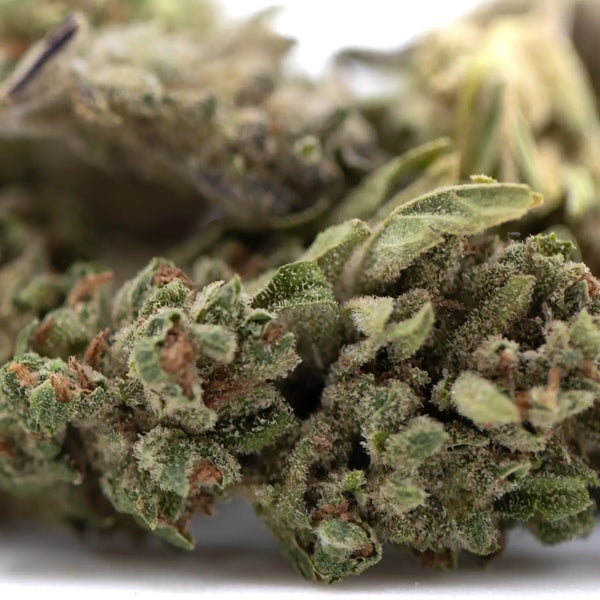
Therapeutic Research Status: Current Science and Future Directions
The Research Gap for Acidic Cannabinoids
Despite constituting the dominant form in living cannabis plants, cannabinoid acids have received disproportionately little research attention compared to neutral forms. This disparity stems from multiple factors:
Historical consumption patterns centered on smoking—a method that automatically converts acids to neutral forms before entering the body. Researchers studying effects of traditional cannabis use were actually studying neutral cannabinoids without realizing the significance of the conversion.
Legal restrictions on cannabis research affected acidic and neutral forms equally, but once research commenced, scientists naturally focused on the compounds they knew produced effects—particularly THC.
Pharmaceutical industry focus on isolated, stable compounds favored neutral cannabinoids over heat-sensitive acids. Drug development traditionally seeks chemical stability across the shelf-life and administration process.
Analytical challenges complicated early cannabinoid acid research. Standard testing methods often induced decarboxylation during sample preparation, inadvertently converting acids to neutral forms before measurement. Modern testing protocols have resolved these technical limitations, but historical research suffers from these analytical artifacts.
Promising Research Areas
Despite limited overall investigation, certain acidic cannabinoid research areas show promise:
Anti-inflammatory applications appear across multiple cannabinoid acids. THCA demonstrates COX enzyme inhibition in preclinical models, while CBDA shows related anti-inflammatory mechanisms. The non-psychoactive nature of these compounds makes them potentially valuable for conditions requiring chronic, high-dose treatment.
Neuroprotection studies on THCA suggest possible applications in conditions involving neuroinflammation or oxidative stress. Animal models indicate effects on inflammatory markers in neural tissue, though human translation requires extensive validation.
Anti-nausea research on CBDA has produced particularly compelling results. The compound's enhanced 5-HT1A receptor activity translates to potent anti-emetic effects in animal models at doses lower than required for CBD. Human trials remain limited but represent a priority research direction.
Metabolic effects through PPARγ receptor activation suggest cannabinoid acids may influence glucose metabolism, lipid storage, and inflammatory pathways related to metabolic syndrome. This research remains preliminary but opens potential therapeutic avenues.
Seizure research has included some investigation of CBDA alongside CBD, though evidence remains mixed and requires substantial further study.
Clinical Trial Needs
The path from preclinical findings to validated therapeutic applications requires rigorous human clinical trials—an area where cannabinoid acid research lags significantly.
Phase I safety studies establishing basic human pharmacokinetics and safety profiles remain incomplete for most cannabinoid acids. Without this foundational data, advancing to efficacy trials proves challenging.
Dose-response relationships require systematic investigation. Preclinical effective doses don't translate directly to human applications, necessitating careful dose-escalation studies.
Bioavailability optimization demands attention. The poor lipid solubility of cannabinoid acids creates absorption challenges that may require specialized formulations or delivery methods.
Comparative studies directly testing cannabinoid acids against their neutral counterparts would clarify when acidic forms offer advantages versus when decarboxylation improves outcomes.
Pharmaceutical and Commercial Interest
Growing recognition of cannabinoid acid properties has attracted both pharmaceutical and supplement industry attention:
Standardized extracts preserving cannabinoid acids are entering commercial markets, creating products distinct from traditional cannabis offerings.
Synthetic cannabinoid acids are under development by pharmaceutical companies, potentially enabling drug development without plant-based material restrictions.
Formulation innovations focus on stabilizing cannabinoid acids in finished products and enhancing their bioavailability through delivery technology.
Patent applications covering cannabinoid acid isolation, formulation, and therapeutic use have increased substantially, indicating commercial confidence in these compounds' market potential.
However, the vast majority of cannabis products still contain primarily neutral cannabinoids, reflecting both consumer familiarity and the simplicity of heat-activated products. The premium THCA flower market occupies a unique position, offering high-potency acidic cannabinoids that consumers can choose to preserve or convert based on their consumption method.
Preservation and Consumption: Working with Acidic Cannabinoids
Maintaining the Acid Form
Preserving cannabinoid acids requires careful attention to storage and handling:
Temperature control represents the most critical factor. Storage below 77°F (25°C) significantly slows spontaneous decarboxylation, while refrigeration (35-40°F / 2-4°C) provides optimal preservation. Freezing extends stability further, though ice crystal formation can damage plant structures.
Light exclusion prevents photochemical degradation. Opaque containers or UV-blocking glass protect cannabinoid acids from light-induced conversion. Many commercial THCA products employ specialized packaging for this purpose.
Moisture management balances preservation needs against mold risks. Properly cured cannabis at 10-12% moisture content provides optimal conditions for long-term cannabinoid acid stability.
Oxygen exposure affects stability less dramatically than heat or light for cannabinoid acids, though limiting oxidation still benefits overall product quality.
pH considerations influence stability in extracted or formulated products. Maintaining acidic conditions can stabilize the carboxylic acid group, while alkaline environments may accelerate decarboxylation.
Raw Cannabis Consumption Methods
Accessing raw cannabinoids requires consumption methods that avoid heating:
Fresh juice from raw cannabis leaves and flowers provides high cannabinoid acid concentrations. This method, popularized by certain wellness advocates, delivers THCA and CBDA without conversion to neutral forms. The taste profile differs significantly from activated cannabis, with herbal, vegetable-like flavors.
Smoothies and blended preparations incorporate raw cannabis into palatable mixtures. The plant material can be combined with fruits, vegetables, and other ingredients to mask the flavor while preserving cannabinoid acids.
Tinctures and alcohol extractions can preserve cannabinoid acids if prepared at room temperature. Alcohol efficiently extracts cannabinoid acids without requiring heat, creating concentrated liquid products. However, alcohol-based tinctures may trigger decarboxylation over extended storage periods.
Topical applications of raw cannabis can deliver cannabinoid acids to skin without oral bioavailability challenges. Some evidence suggests topical absorption of cannabinoid acids, though research remains limited.
Cold water extraction preserves cannabinoid acids while removing plant material. Though cannabinoid acids show limited water solubility, some extraction occurs, particularly with plant material agitation.
Why Heating Destroys Acids
The decarboxylation mechanism explains why traditional consumption methods eliminate cannabinoid acids:
Smoking generates temperatures exceeding 1,000°F (538°C) at combustion points, instantly converting all cannabinoid acids to neutral forms. No THCA survives the smoking process.
Vaporization intentionally heats cannabis to temperatures that decarboxylate cannabinoids while avoiding combustion. Even low-temperature vaping (around 350°F / 177°C) converts acids to neutral forms.
Cooking and edibles preparation typically involves decarboxylation as a deliberate step. Recipes instruct home cooks to heat cannabis in ovens before incorporating it into foods, ensuring THC activation for desired effects.
Concentrate production often includes decarboxylation steps. Many extraction processes involve heat that converts cannabinoid acids, or manufacturers deliberately decarboxylate extracts to produce neutral cannabinoid concentrates.
Products That Preserve vs. Convert Acids
Understanding the acid/neutral distinction helps consumers navigate product categories:
Products preserving cannabinoid acids:
- Raw, uncured cannabis (rarely commercially available)
- Properly stored premium THCA flower (convertible to THC when heated by user)
- Flash-frozen live resin (if stored cold and not deliberately decarboxylated)
- Some raw cannabis juices and tinctures
- THCA or CBDA isolate crystals (until heated)
Products containing primarily neutral cannabinoids:
- All smoked or vaped cannabis
- Decarboxylated edibles
- Most cannabis oils and tinctures
- Activated THC or CBD concentrates
- Heated or aged cannabis products
Products containing mixed profiles:
- Partially decarboxylated extracts
- Some full-spectrum oils
- Cannabis that has undergone spontaneous decarboxylation during storage
The THCA flower collections represent a unique category—high-purity acidic cannabinoids that users can choose to preserve through raw consumption or convert through traditional heating methods.
Frequently Asked Questions
What is the difference between THCA and THC? THCA (tetrahydrocannabinolic acid) is the acidic precursor to THC found in raw cannabis plants. It contains a carboxylic acid group (COOH) that THC lacks. THCA is non-psychoactive and cannot produce intoxication, while THC causes the psychoactive effects associated with cannabis. When THCA is heated through smoking, vaping, or cooking, it loses its acid group in a process called decarboxylation, converting to THC.
Are cannabinoid acids psychoactive? No, cannabinoid acids like THCA and CBDA are not psychoactive. The carboxylic acid group prevents these molecules from binding effectively to CB1 receptors in the brain, which are responsible for cannabis's intoxicating effects. Only after decarboxylation, when the acid group is removed and THCA becomes THC, does psychoactivity emerge. This means consuming raw THCA flower without heating will not produce a "high."
How do you preserve cannabinoid acids in cannabis? Preserving cannabinoid acids requires protecting cannabis from heat, light, and extended time. Store cannabis in cool (below 77°F), dark conditions using opaque or UV-blocking containers. Refrigeration extends stability further. Avoid exposure to temperatures above 200°F, which trigger rapid decarboxylation. Properly stored cannabis can maintain high cannabinoid acid content for months, though slow spontaneous conversion occurs over time even under optimal conditions.
What are the benefits of raw cannabinoids vs. decarboxylated ones? Raw cannabinoid acids offer distinct properties from their decarboxylated counterparts. THCA provides non-psychoactive effects, making it suitable for situations where intoxication is undesirable. Research suggests cannabinoid acids may have unique anti-inflammatory and neuroprotective properties. CBDA demonstrates particularly strong serotonin receptor activity and anti-nausea effects. However, neutral cannabinoids like THC and CBD have been more extensively studied and offer their own therapeutic profiles. The choice depends on desired effects and individual circumstances.
Can you convert THCA to THC at home? Yes, THCA converts to THC through heat application. The simplest method is oven decarboxylation: spread ground cannabis on a baking sheet and heat at 220-250°F for 30-45 minutes. This controlled heating efficiently converts THCA to THC while minimizing degradation. Alternatively, smoking or vaping THCA flower automatically decarboxylates cannabinoid acids during consumption. Lower temperatures (around 200°F) can achieve conversion over longer durations if you prefer gentler processing.
What is CBG-A and why is it called the mother cannabinoid? CBG-A (cannabigerolic acid) is called the "mother cannabinoid" because all major cannabinoid acids originate from it. Cannabis plants first produce CBG-A, then specialized enzymes convert it into THCA, CBDA, or CBC-A depending on the plant's genetics. This makes CBG-A the universal precursor in cannabinoid biosynthesis. Some cannabis strains are bred to maintain high CBG-A levels by minimizing conversion to other cannabinoids, allowing consumers and researchers to access the mother cannabinoid directly.
Does CBDA have different properties than CBD? Yes, research indicates CBDA has distinct properties from CBD rather than being simply an inactive precursor. CBDA demonstrates approximately 100-fold stronger binding to 5-HT1A serotonin receptors than CBD, potentially offering enhanced anti-nausea and anti-anxiety effects. However, CBD shows broader receptor activity overall and has been more extensively studied. Some evidence suggests CBDA may have better anti-inflammatory properties in certain contexts, while CBD may be superior for other applications. They appear to be complementary compounds rather than one being simply better than the other.
Why are cannabinoid acids less researched than neutral cannabinoids? Cannabinoid acids received less research attention because traditional cannabis consumption methods—primarily smoking—automatically convert acids to neutral forms through heat. Early researchers were effectively studying THC and CBD without recognizing the distinction from THCA and CBDA. Additionally, legal restrictions limited research resources, and when research occurred, scientists focused on the compounds producing obvious effects. Analytical challenges also complicated early cannabinoid acid research, though modern testing methods have resolved these technical issues.
What temperature causes THCA to convert to THC? THCA begins converting to THC around 220°F (104°C), with rapid decarboxylation occurring at this temperature and above. Smoking and vaping reach temperatures of 400°F (200°C) or higher, causing near-instantaneous conversion. Slower conversion occurs at lower temperatures over extended periods—even room temperature causes gradual spontaneous decarboxylation over months. For efficient controlled decarboxylation, most methods use temperatures between 220-250°F for 30-45 minutes to balance conversion speed with product quality.
Can you get high from eating raw THCA? No, eating raw THCA will not produce intoxication. THCA in its acidic form does not bind to CB1 receptors in the brain, which are responsible for cannabis's psychoactive effects. Only after decarboxylation through heat does THCA become THC and gain psychoactive properties. However, some spontaneous decarboxylation may occur if raw cannabis is stored improperly or aged significantly. Additionally, the digestive process generates some heat, potentially causing minimal conversion, though not enough to produce noticeable intoxication from fresh, properly stored raw THCA flower.
Conclusion: The Future of Acidic Cannabinoid Science
The distinction between acidic cannabinoids and their neutral counterparts represents more than academic chemistry—it opens new avenues for cannabis research, product development, and consumer choice. As scientific understanding evolves beyond viewing THCA, CBDA, and other cannabinoid acids as mere precursors, these compounds emerge as bioactive molecules deserving independent investigation.
The unique properties of acidic cannabinoids—their non-psychoactive nature, distinct receptor profiles, and different pharmacokinetics—position them as potential therapeutic agents complementing rather than simply preceding neutral cannabinoids. Research on CBDA's enhanced serotonin receptor activity and THCA's anti-inflammatory mechanisms suggests these compounds offer more than passive storage forms awaiting activation.
For consumers, understanding the acid/neutral distinction enables informed choices about consumption methods and product selection. Whether seeking the traditional THC experience through decarboxylated products or exploring the unique properties of raw THCA flower, knowledge of cannabinoid chemistry empowers better decision-making.
The coming years will likely see expanded research on cannabinoid acid properties, improved extraction and preservation technologies, and innovative products leveraging these compounds' distinctive characteristics. As legal markets mature and scientific investigation deepens, acidic cannabinoids are poised to claim their rightful place alongside THC and CBD in the cannabis science landscape—not as forgotten precursors, but as valuable compounds in their own right.
For those interested in experiencing premium acidic cannabinoids in their most potent, natural form, explore our complete collection of new THCA releases, featuring carefully cultivated and properly stored flower that preserves these fascinating compounds at their peak concentration.

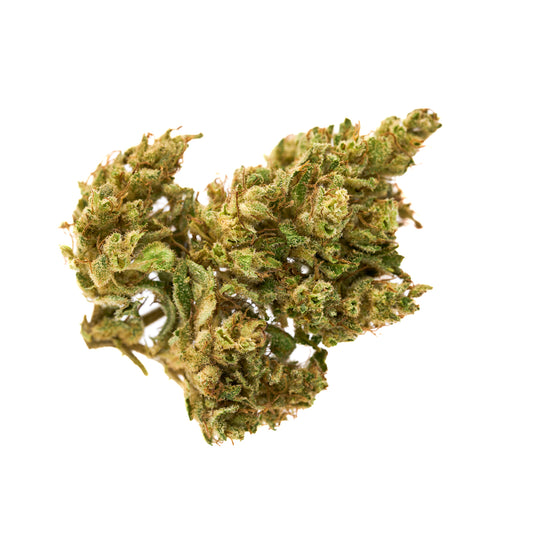
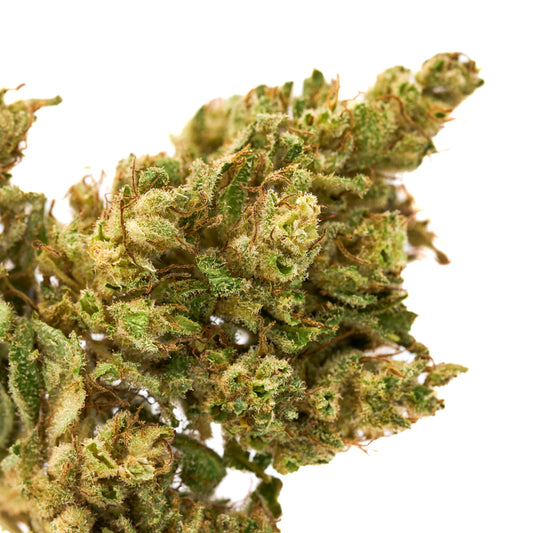
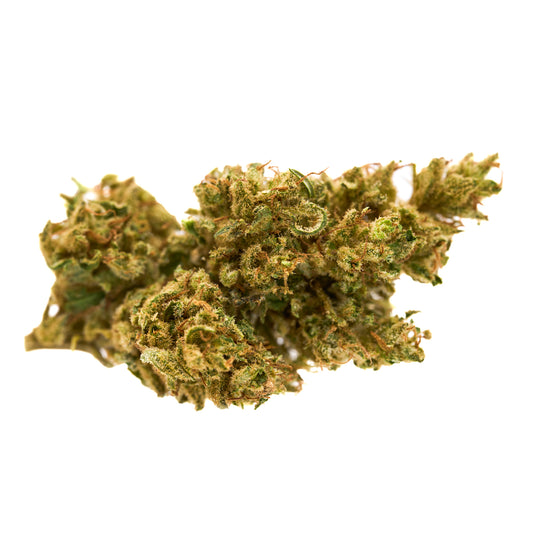

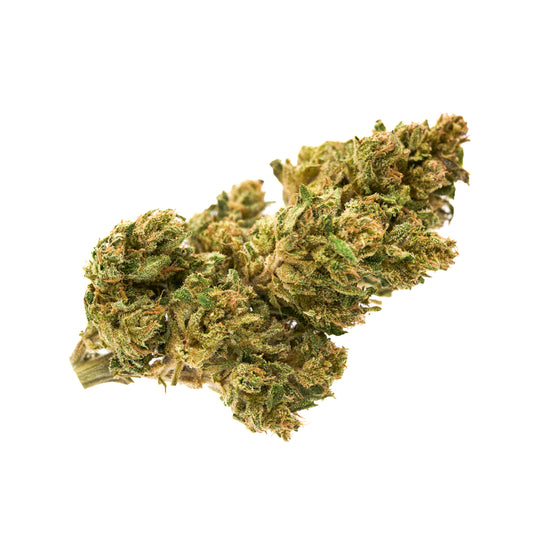




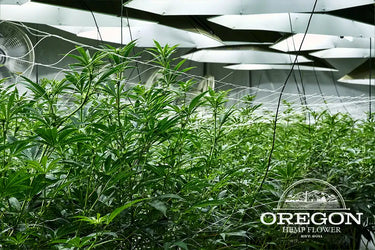

Leave a comment
Please note, comments need to be approved before they are published.